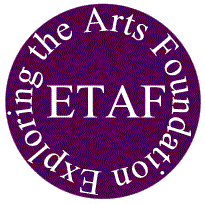|
| ||||||||||||||||||||||||||||
|
||||||||||||||||||||||||||||
|
|
||||||||||||||||||||||||||||
the role of truth in myth—myth As metaphor
The way Campbell uses the term transcendence, he means that which goes beyond ordinary limits; beyond direct apprehension; outside consciousness. Where myth and mythology are concerned, what is truth?Consider the term mythos:
The term mythos originates with the Greek word for story, or word, and for good reason: ancient Greek people understood themselves by telling stories.
A mythos has momentum; once established, it is handed down from generation to generation; its hard to stop. Why question handed-down wisdom? This stance is taken in many contemporary societies just as it was by ancient ones. Many of the creatures whose stories are told in a mythos are supernatural; they're fabled—they don't exist in real life and never did. Have you ever conversed with a centaur? Many of the feats of these fabled creatures are clearly beyond the capabilities of real men and women. Does Atlas really hold up the world? Does a turtle? Why, then, do people believe in myths? In part, superstitious people accept fabulous tales as literal truth because they portray mythic characters and events that are supernatural. By definition, supernatural beings can accomplish virtually anything. Even if illusionary, such tales offer the hope that a person can gain control over his life, that it is possible to find a safe haven. Such tales also simplify life and reduce it to fundamentals. Frightened, superstitious, uneducated or undereducated people can't be faulted for taking fantasy as literal truth. They possess little accurate, scientific information and live uneasy, dangerous lives. For them, the world is an ominous place and myth is a crutch that can explain the unexplainable. Myths play a vital role in society; they help prop it up. Social norms dictate that ethical and legal systems be rationalized so that order can be maintained. Myths can overlay society with an appealing veneer of rationality. A mythos can convert a society's perception of reality from that which is utterly mysterious, confusing, chaotic, and uncontrollable to that which seems orderly, sane, and purposeful. Never mind whether a mythos is true. Truth is not always absolute; truth can be relative. Sometimes truth is only an accepted point of view, a convention, a habit, or a societal norm. Truth can vary with the observer. Even enlightened audiences in modern societies—people who think that they know the difference between fact and fantasy—are capable of enjoying and benefiting from mythical tales. Why? Modern audiences read about mythical heroes in books and magazines and see them in movies or on television. They expect to voluntarily and temporarily suspend disbelief, as Samuel Taylor Coleridge would have it, and empathize with the improbable exploits of mythic personages, just as did past mythic audiences and just as do present-day audiences rooted in other cultural groups. They witness heroes exercising control over their surroundings and are gratified thereby. Heroic exploits comfort and entertain them; they offer modern audiences the possibility of catharsis and temporary escape from the pressures of reality. They confirm the modern audience's mythos and world view. Even though 21st century mythical tales are based on modern-style heroes, a modern mythos, and a modern view of reality, they make enlightened hearts beat faster, just as they do in other cultures, past and present. Fundamentally, when it comes to myth, there is little difference between a 21st century mythic audience and a mythic audience from ancient Greece in the 5th century B.C.E., whose heroes, mythos, and view of reality were radically different. Myths bring insights to contemporary men and women that help them better understand themselves and their world. myth as metaphorMyths are stories that are true and false at the same time. When can a story be true and false? When it's a metaphor. A metaphor is a figure of speech in which a term or phrase is applied to something to which it is not literally applicable in order to suggest a resemblance, as in a sea of troubles or in Hamlet's line, All the world's a stage. In a metaphor, one thing is conceived as representing another; one thing is used to mean something else. A metaphor is an emblem, a symbol of something else that's not meant to be taken literally. A myth is like that. A myth is a metaphor, an invented story or theme whose characters and events not only represent themselves; they also represent something else. As with any invented story, a myth may contain elements that are both true and false. A myth might be based on:
In other words, a myth is part fact, part fiction, and part metaphor. A mythic audience may have faith and believe in its literal truth, or it may not. If not, apparent fact or fiction can legitimately be asserted to be truth even though the author or the audience knows or suspects one or both actually to be false. Truth can be manhandled in this way because the apparent fact and fiction in a myth are vehicles whose objective is expression of the metaphor. A myth is a single story that tells two stories at once. One story consists of what the words say and mean when they are taken at face value; the other story consists of what's said between the lines, or as contemporary writers like to phrase this idea, what's said in the subtext. To elaborate on this notion:
| ||||||||||||||||||||||||||||
|
| ||||||||||||||||||||||||||||
Search this web site with Electricka's Search Tool:
tap or click here
Electricka's Theme Products
Shop At Cafe Press
This web site and
its contents are copyrighted by
Decision Consulting Incorporated (DCI).
All rights reserved. | ||||||||||||||||||||||||||||

 Little has changed since these ancient times. Stories are one important means by which ancient
cultures (and also modern ones) capture their belief systems for themselves and their posterity. Their
mythos lives in and is documented by such stories. A corpus of them is the
core expression of the
beliefs of a culture; it can serve as a
vehicle by which a culture influences successive generations and passes
itself on to its descendents.
Little has changed since these ancient times. Stories are one important means by which ancient
cultures (and also modern ones) capture their belief systems for themselves and their posterity. Their
mythos lives in and is documented by such stories. A corpus of them is the
core expression of the
beliefs of a culture; it can serve as a
vehicle by which a culture influences successive generations and passes
itself on to its descendents.

